Genus Hakea Rank Species | ||
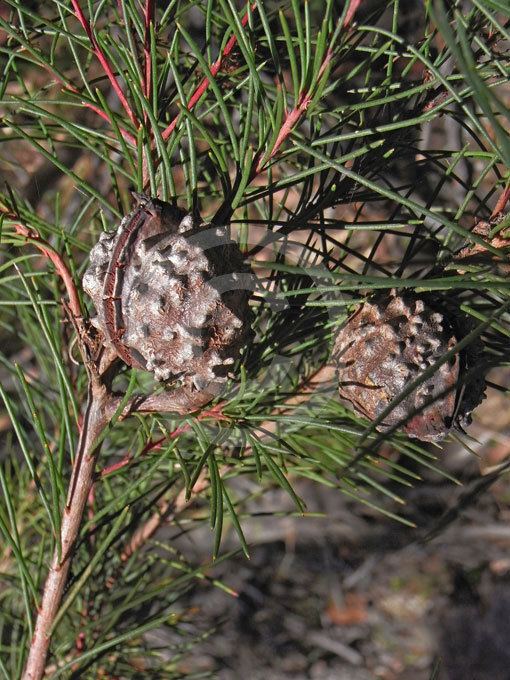 | ||
Similar Hakea sericea, Hakea dactyloides, Hakea teretifolia, Hakea drupacea, Hakea salicifolia | ||
Hakea gibbosa, commonly known as hairy hakea or rock hakea, is a shrub of the family Proteaceae native to southeastern Australia. It has become an environmental weed in South Africa and New Zealand, where it had been introduced for use as a hedge plant.
Contents
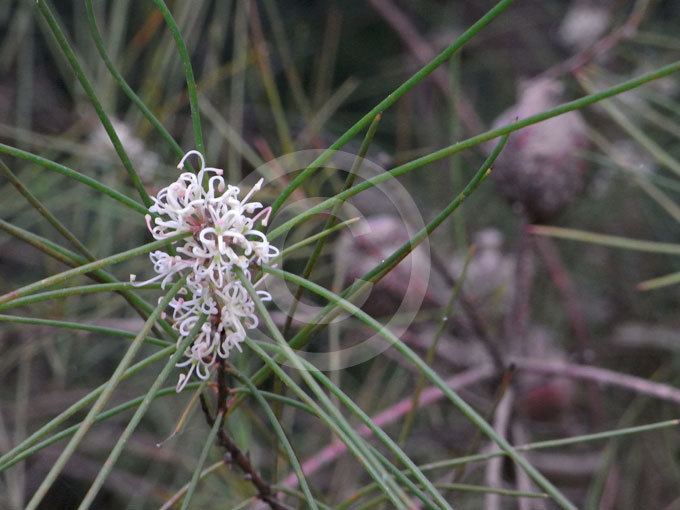
Taxonomy

James Edward Smith named the species Banksia gibbosa in 1790, before Antonio José Cavanilles gave it its current name in 1800. Meanwhile, Richard Anthony Salisbury had given it the name Banksia pinifolia in 1796, upon which Joseph Knight based his name and reallocated it to Hakea as the pine-leaved hakea (H. pinifolia) in his controversial 1809 work On the cultivation of the plants belonging to the natural order of Proteeae.
Common names include hairy hakea, rock hakea, or downy hakea.
Description

It grows as a shrub 90 cm to 3 m high. The new growth and leaves are covered with fine hair. The leaves are linear and tipped with a very sharp point. The flowerheads, known as inflorescences, are axillary (arising from the stems) and are composed of two to six individual cream-coloured flowers. Flowers are followed by the development of a woody fruit, or follicle, which is roughly globular and measures 2.5–3 cm (1-1.2 in) long by 2-2.5 cm (0.8–1 in) wide with a wrinkled or warty surface and small beak. Each contains two seeds, released by the pod which opens after fire or if the parent plant perishes.
Distribution and habitat
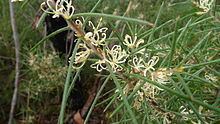
Restricted to the Sydney basin in central New South Wales, Hakea gibbosa is found on sandstone ridges and cliffs in heathland, with red bloodwood (Corymbia gummifera), tea tree (Leptospermum trinervium), dagger hakea (Hakea teretifolia), heath banksia (Banksia ericifolia), and conesticks (Petrophile pulchella).
Plants found in Queensland which were classified as this species have been renamed as a new species Hakea actites.
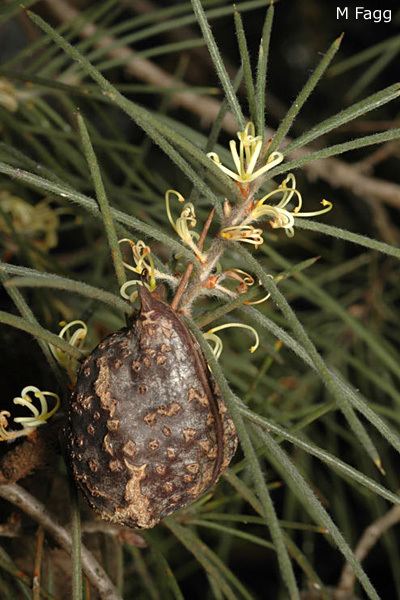
Hakea gibbosa is a Category 1 Plant on the Declared Weeds & Invaders list for South Africa. It has become naturalised in northern parts of North Island in New Zealand.
Ecology
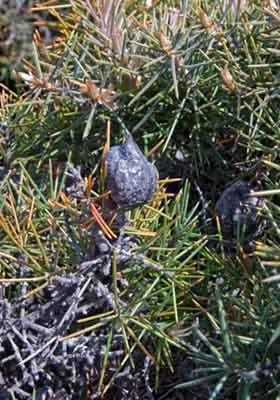
Hakea gibbosa plants are killed by bushfire, and regenerate from seeds held in seed pods in the plant canopy.
Small birds use the prickly foliage as shelter. The seeds are eaten by the Yellow-tailed Black Cockatoo.
Cultivation
Hakea gibbosa adapts readily to cultivation and is easy to grow with good drainage and a sunny aspect, though its prickly foliage may be a deterrent.
The gum was investigated for use in sustained-release tablets in 1999.
